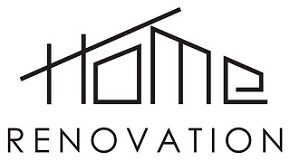
How to decipher environmental labels?
When accommodations are put up for sale or for rent in any real estate agency, they must imperatively be accompanied by two environmental labels . These are established on the basis of the conclusions of the energy performance diagnosis (EPD) .
The energy label
It ranks housing from the least energy-intensive (category A) to the most energy-intensive (category G). The unit for measuring this energy performance is the kWh ep./m2.year, that is to say the kilowatt hour in primary energy per square meter and per year. To establish this consumption, the diagnostician is interested in the energy consumption of the heating, air conditioning and domestic hot water production stations .
The climate label
It classifies dwellings according to their greenhouse gas emissions, from the lowest emitters (category A) to the highest emitters (category G). The unit of measurement is the kg eqCO2/m2.year, ie the equivalent kilogram CO2 per square meter and per year. This allows you to see if the type of energy used in the home emits a lot or a little greenhouse gas .
To find your way around, know that a dwelling is considered “eco-responsible” if, on its two labels, it is classified in the green categories, A, B or C. These benchmarks will guarantee you a lower environmental impact and energy expenditure.
The energy label must be affixed to the product in a clearly visible manner for heating, water production and air conditioning appliances. Be aware that a device is considered “eco-responsible” if it is classified in the green categories: from A++ to A or from A to C depending on the type of device . These categories will guarantee you a reduced environmental impact and energy expenditure. During an installation estimate, remember to ask the professionals for the energy class of the product offered .
Among the information given, you have: the name of the manufacturer, the name of the appliance and the model, the operating noise level, in decibels, for mixed or thermodynamic appliances and the power in kilowatts (kW) . We also explain the specifics to check on each label during your research in order to find the right eco-responsible equipment for your home.
heaters
Three types of equipment are affected by this labeling: gas, fuel oil, electric boilers , all-energy heat pumps (PAC) and micro-cogeneration boilers with a maximum electrical power greater than 50 kW.
The energy category of the device in terms of heating ranges from A++ to G , from the least energy-intensive to the most energy-intensive. If the appliance also provides a domestic hot water function, the classification will be from A to G. To verify this, pictograms indicate the nature of the equipment: a radiator for heating and a tap for domestic hot water.
To find out if the device can work during off-peak hours , look to see if you see a clock with coins on it. If the device generates electricity , a lightning bolt arrow is affixed. A map dividing the European Union into three zones indicates the useful power in kW according to the zone where you live . Finally, for heating installations, point out all the equipment offered : the energy class of the main device and whether solar panels, a regulation system or, for example, a hot water tank are also provided.
Hot water production devices
The labeling concerns four types of equipment: electric or gas water heaters, thermodynamic water heaters, solar water heaters and storage tanks. The energy category ranges from A+++ or A for the most efficient appliances to G for the least efficient .
For water heaters , see if the device can operate during off-peak hours (pictogram with a clock and coins). Indications are also provided concerning the noise of the indoor and outdoor units, the consumption per year of electricity or fuel according to the zone where you are in Europe. Also take the time to check the annual electricity consumption in KWh or fuel consumption in gigajoules (GJ) for gas and fuel oil.
For tanks storing hot water , point to the storage capacity indicated in liters (L). As for the energy class in watt (W), it indicates whether or not the device is well insulated. This lets you know if there is a lot of heat loss.
For domestic hot water installations , a label is provided with the energy performance of the combination of a solar water heater, the back-up (eg the boiler) and the storage tank. Ask your advice.
air conditioning units
Environmental labeling is mandatory for air-to-air air conditioners with a capacity of less than 12 kW. This concerns air conditioners providing only cooling mode, those offering only heating and reversible air conditioners that can do cold and heat according to the program chosen. The energy class of the appliance ranges from A+++ to D.
If you opt for a reversible device, take an A+ rating for heating mode with single-duct devices and A with double-duct devices or other systems.
To identify if the device is hot, look if the air logo is red. If it is blue, it is producing cold. If you have both, the device is reversible.
A difference is also made between noise for indoor (maximum 65 dB) and outdoor (maximum 70 dB) units.
What do you need to look at for the appliance environmental label?
As with other everyday consumer goods, the environmental labels of household appliances include: the names of the manufacturer and the model, the category to which the product belongs, the annual consumption in kilowatt hours (kWh) of the product.


